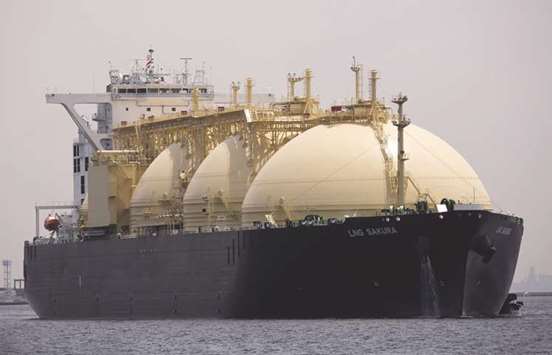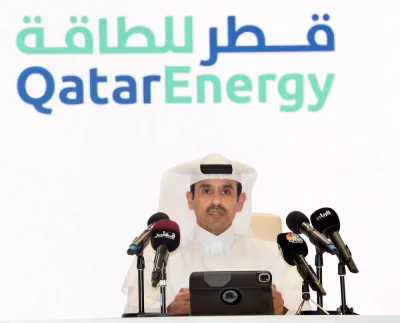The shipping fuel price and spot charter rates are forecasted to be stable and expected to stabilise shipping costs at the current level, according to GECF secretary-general Yury Sentyurin.
This, he said could “prevent shipping costs from skyrocketing” to the pre-2014 levels.
The global LNG capacity is expected to grow from 377mn tonnes per year (mtpy) in 2017 to around 463mtpy by 2020 mainly from new projects in the US, Australia and Russia.
Likewise, the global LNG trade is also forecasted to increase from 289mtpy in 2017 to 314mtpy and 353mtpy in 2018 and 2019 respectively, with strong growth in LNG imports from China and India, Sentyurin told Gulf Times.
Historically, he said LNG carriers and their capacity have grown in line with growing LNG trade and liquefaction capacity. In 2018 and 2019, a total of 73 new LNG carriers are expected to be commissioned (an increase from 467 vessels in 2017) with an overall capacity of 5.5mtpy (an increase from 32.8mtpy capacity in 2017).
“This is considered to be sufficient to meet the growing LNG trade. However, as only a small number of vessels are expected to be commissioned post 2019, amidst growing demand for spot LNG, this could lead to a shortfall in available LNG carriers from 2020,” Sentyurin noted.
There are several factors, which affects vessels availability for LNG trade, he pointed out.
Firstly, the duration of the charter contracts is of significant importance. The growing demand of short-term/spot LNG trade entails increasing demand for LNG vessels not operating under long-term contracts.
As of early 2018, 65% of the LNG carriers were chartered under long-term contracts valid until 2020 while the remaining 35% could be chartered under short-term or spot contracts.
Another factor is the seasonality demand for LNG, which is higher during the northern hemisphere winter and summer months and declines during spring and autumn months.
Finally, since new built LNG carriers are usually assigned to new LNG plants, delays in the commissioning of new LNG plants have led to some vessels coming to the market before the LNG plant is commissioned, he said.
LNG shipping costs, which consist of LNG carriers’ charter rates, shipping fuel prices and other costs such as port fees, canal fees and boil of gas, could represent up to 25% of the delivered LNG price depending on the trade route, Sentyurin said.
Charter rates, fuel price (which is highly dependent on the oil price due to the dominance of fuel oil in the bunkering fuel market) and the distance of trade routes have a significant impact on shipping costs.
He noted spot charter rates for LNG carriers, which averaged $28,000/day in 2017 declined from a high of $142,000/day in 2012 due to the growing number of LNG carriers and reinforcing competition in the market, but recorded a modest recovery from a low of $23,000/day in 2016.
Spot charter rates also fluctuate in line with the seasonal demand for LNG. The shipping fuel prices declined to $298/t in 2015 from $673/t in 2012 due to the lower oil prices and raised the competitiveness of long-haul trade routes and translated into a decline in LNG prices.
In March 2018, spot charter rates and fuel prices averaged $36,600/day and $384/t respectively. The shipping fuel price and spot charter rates are forecasted to be stable and is expected to stabilise shipping costs at the current level and could prevent shipping costs from skyrocketing to the pre-2014 levels.
GECF Secretariat currently monitors developments in the LNG shipping industry in correlation with LNG trade using its ‘Shipping Cost Model’, which was developed in-house, Sentyurin added.

The LNG Sakura gas tanker arrives at Tokyo Gas Co’s Negishi LNG terminal in Yokohama, Japan on Monday, May 21, 2018. The shipping fuel price and spot charter rates are forecasted to be stable and expected to stabilise shipping costs at the current level, according to GECF secretary-general Yury Sentyurin.



